I hiked Mauna Loa, the World’s largest (and currently active) volcano. It was a unique and challenging experience in a lot of ways.
Trip Prep
I landed in Kona on a Friday night and planned on doing the hike the next morning. I had made some homemade Gatorade-style “gu” the night before, which I brought with me on the plane. I wasn’t checking a bag, which meant I needed to stock up on food when I landed.
Safeway was the most convenient option, where I purchased several bulk snacks and two liters of water. Yes, I bought bottled some bottled water… I have a 2-liter camel back, but don’t have anything else that can stay flat during transport. I knew from doing research that there are absolutely no services and no flowing water, not even at the trail head. In hindsight, the 4-liters of water I brought probably wasn’t quite enough!
Special thanks to Big Island Hikes for a comprehensive trip report. I don’t think I would have been properly mentally prepared for this hike without their detailed blog.
Getting to the Trailhead
From Kailua-Kona it was about 70 miles to the Mauna Loa Observatory, where the trailhead is located. It took me nearly two hours to do this drive, leaving right around 5AM! The bulk of the time was spent on Observatory Road, which is literally one nicely paved lane with no shoulder and lava flows on each side. It took me about an hour to drive 27 miles on that road. With all the ups and downs and side to sides it was impossible to drive more than 25 miles per hour.
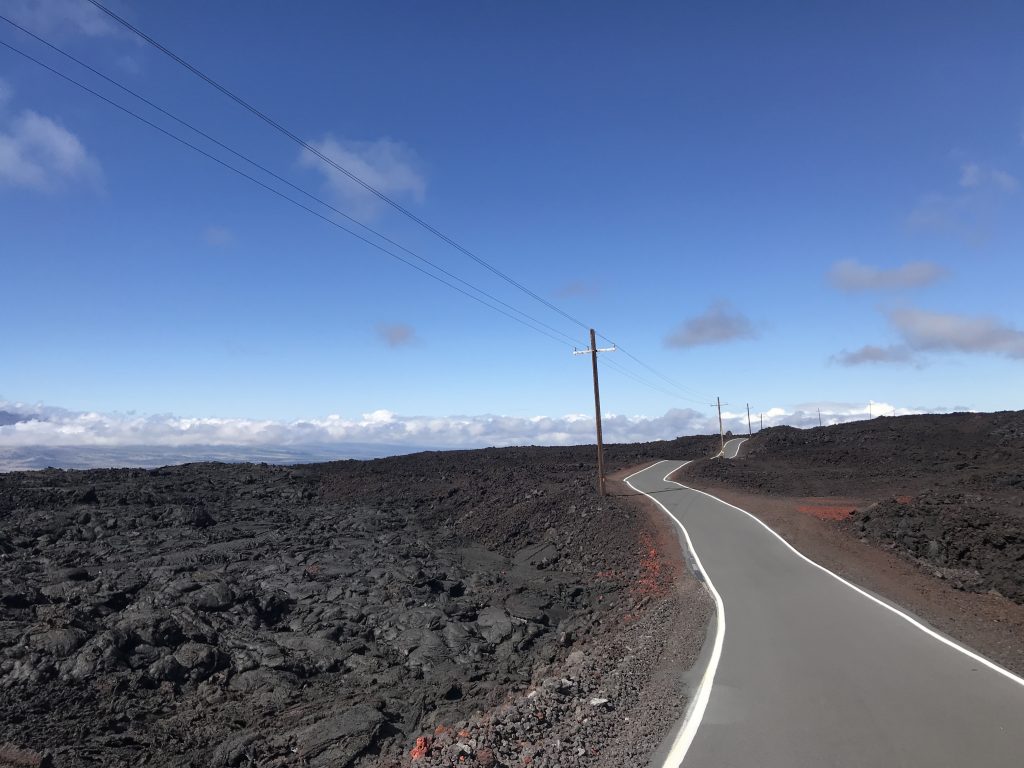
The Hike Itself
…was grueling, to say the least! I traveled from sea level to the trailhead at 11,000 feet in just a few hours, leaving no time to acclimate. Although there was only about 2,600 feet of elevation gain, the hike was one of the most difficult experiences of my life. No joke. It was tough!
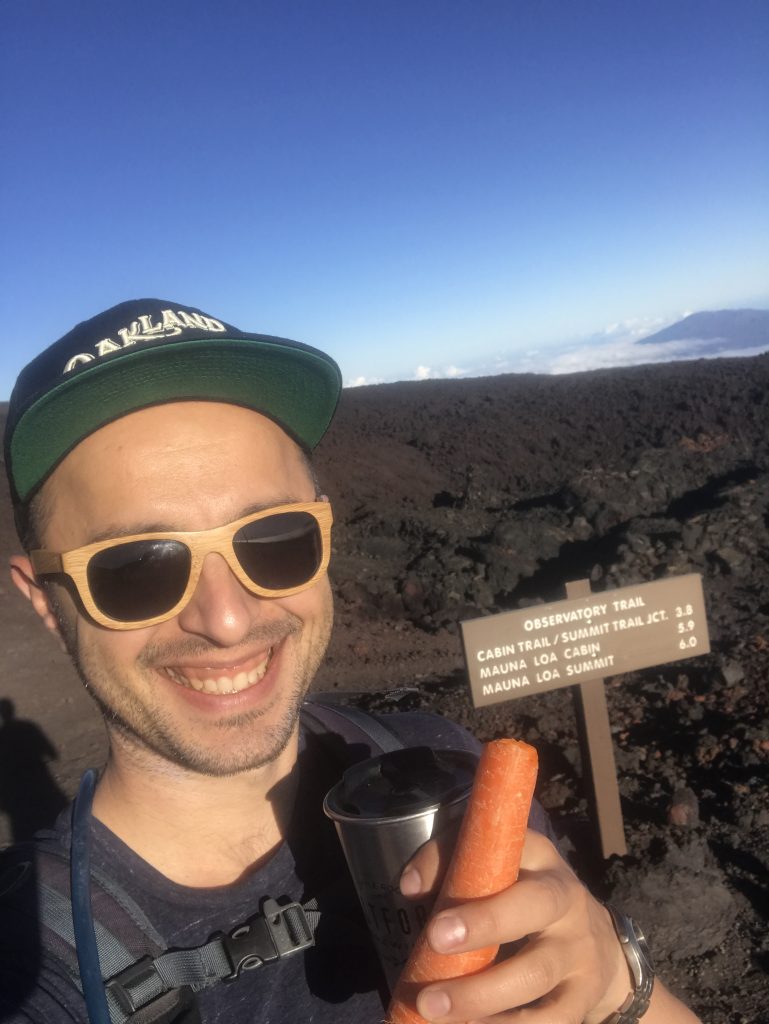
Feeling bright-eyed and bushy-tailed with my coffee and bulk bin carrot.
It took me about five hours to travel six miles to the summit! At 50 degrees Fahrenheit, the temperature was pleasant. I actually hiked the first few miles without a jacket on, but quickly realized the need to keep my skin covered and protected from the sun. The wind blew consistently at 15-20 miles per hour and there was no shade. There was also, for the most part, no trail. Instead, there were cairns to lead the way.
In case you were wondering, a cairn is a pile of rocks, artificially stacked, which connect broken pieces of trail (I always have referred to them as “ducks”). On this route, with all the volcanic activity, there was no trail which meant that I had to rely exclusively on the cairns as my guide.
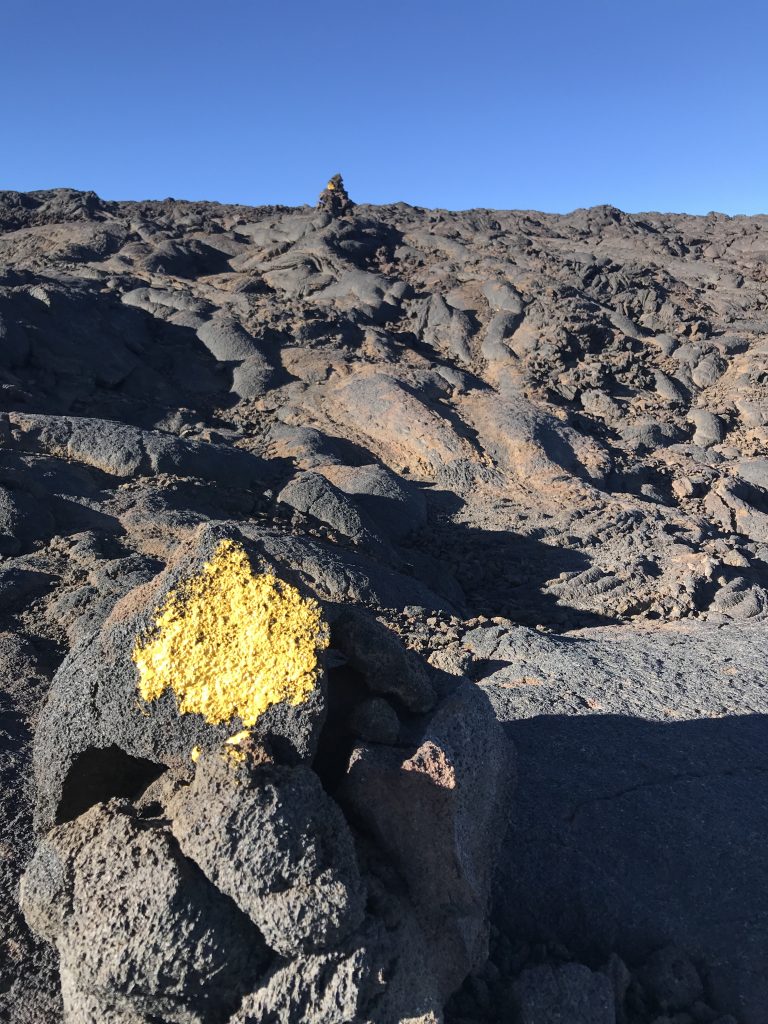
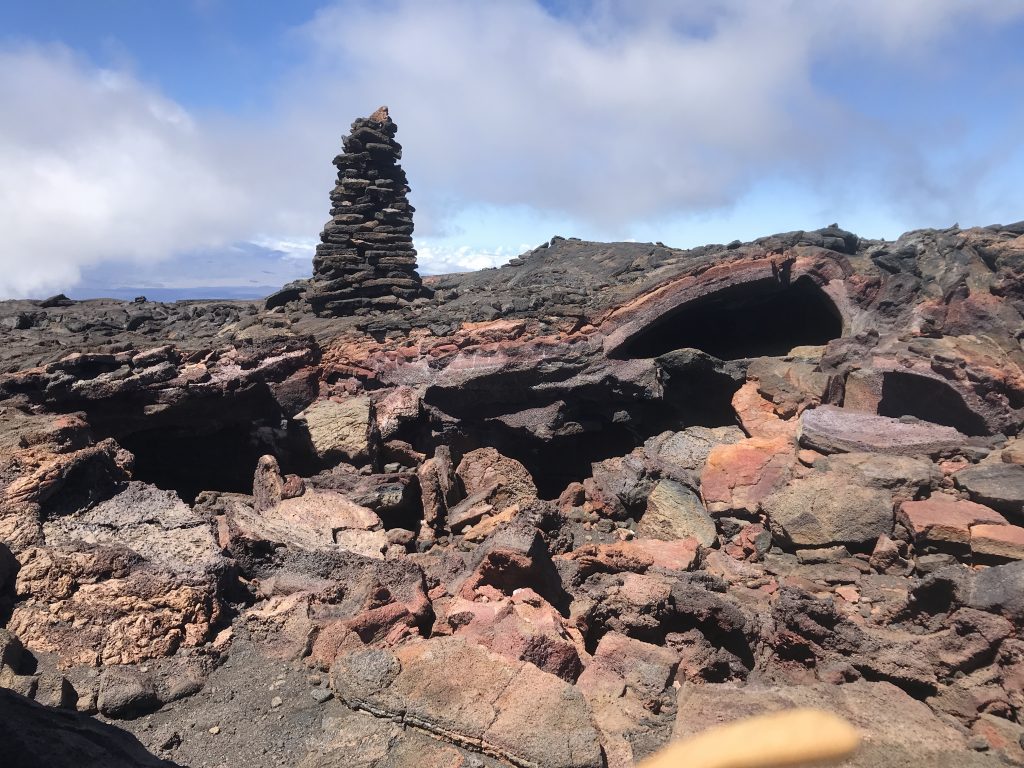
This also meant that the trail was rough. I never realized there were so many types of lava flow! Some where smooth and shiny, whereas others were prickly and looked like they could have easily pierced right through my shoes, had I not worn sturdy boots. Some sounded like broken glass under my feet, and others felt like walking on gravel.
The Views During the Climb
The views were magnificent. Starting at 11,000 feet was unique in that I was above the cloud cover. From my vantage point, I could see Mauna Kea to the North and Kohala to the Northwest. I’m also fairly certain I could also see the Haupa’Akea Peak on Maui about 80 miles away just barely visible above the clouds.
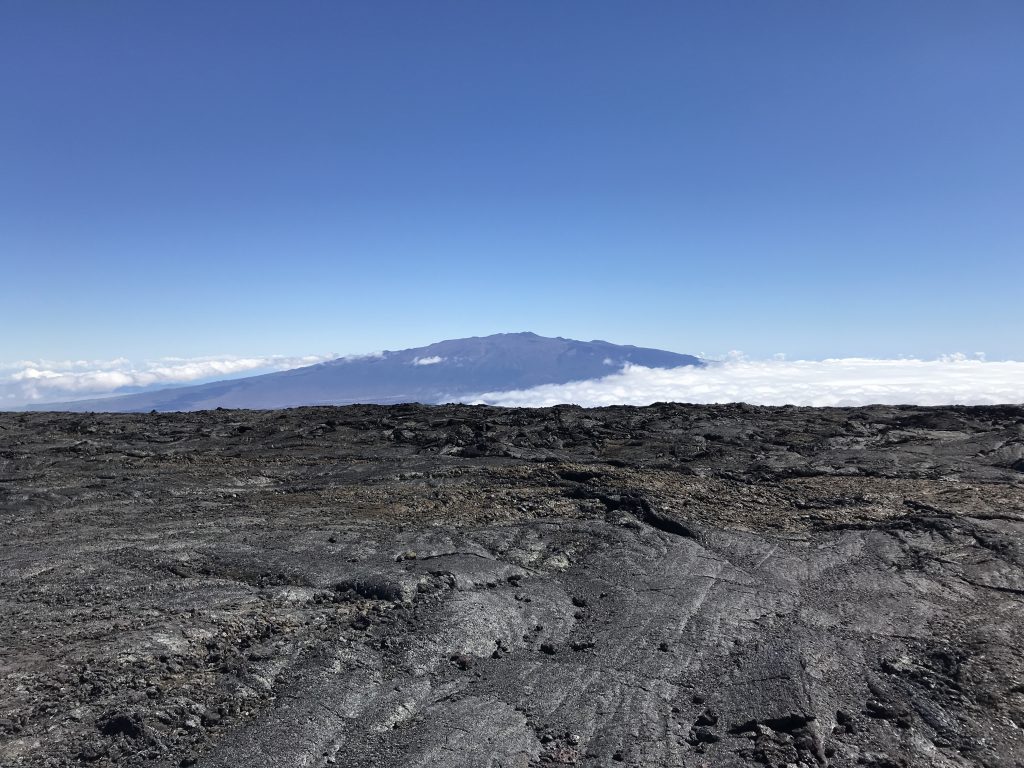
The Elevation
As I mentioned previously, this hike was one of the most difficult things I have ever done. It was like those times I ran the LA Marathon, except that it took me twice as long, there were no water refill stations, and no one was handing out snacks. And, on top of it all, I was the only person on the trail. Like literally the only person. In fact, the best I can tell, I was the only person to summit the mountain that day!
I believe there is about one-third less oxygen at 13,000 feet than sea level. Couple that with no time to acclimate and hiking solo, and it just added to the difficulty.
I have been above 13,000 feet several times and have been to the top of Mt. Whitney twice, which is at 14,500 feet. I think what made this hike different was the solitude. I never panicked or freaked out, but hiking solo started to get to me about four miles in.
I found myself in a constant state of self-doubt. As I watched the clouds flow in from the West in the valley between Mauna Loa and Mauna Kea, I kept telling myself that I needed to turn around.
The whether is going to be bad on the way down.
What if it rains?
What if the visibility is bad?
In what should have been a magnificent moment of sheer beauty, I found myself wondering about what the conditions might be like on my way back down at a point when I would have just about been to the car anyway. After all, I was above the clouds.
I marched on…
A turning point
There was one more time time when I seriously considered turning around. I was at about 13,000 feet and only had about a half-mile to go. I had told myself that my narrative would be that I had the strength to know when to turn around…to know when to give up.
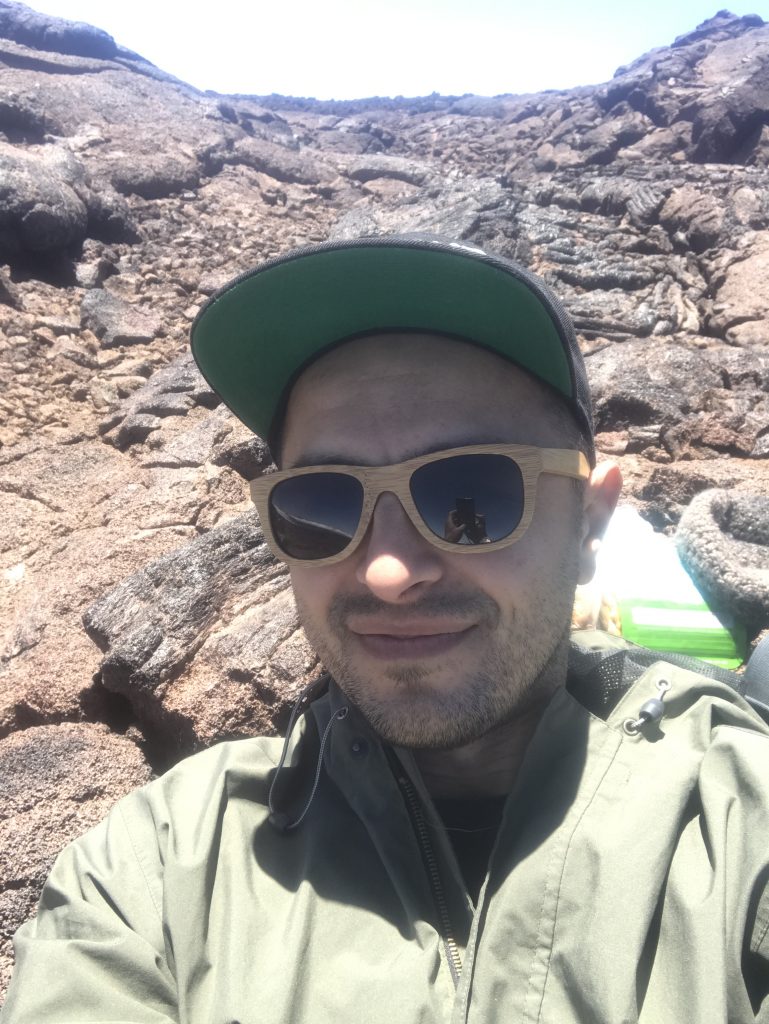
Yes, I had been at elevation in the past, but I had always been with other people. This time I was literally all alone. It would have been one thing if there were others on the trail, but there weren’t. The elevation was getting to me and I was feeling woozy. I still had my strength, but my vision was starting to deteriorate. I thought I saw a person maybe 20 feet in front of me. When I got closer I realized it was a cairn with a dead bird on it. That dead bird would go onto be the only sign of life, if you can call it that, that I saw for most of the day.
I took a calculated risk. I knew I was close to the summit and that it was not to disappoint. I had enough water and snacks to keep me going, and I could see what looked like a massive cairn not too far ahead, so I kept going. I’d say about 20 minutes later I was at the summit.
The View from the Top
The view of the crater was worth the trouble. When I got to about 10 feet from the edge of the crater, I decided I had gone close enough. I was in good spirits, but definitely not particularly stable. Ten feet from what I would later learn was a 400-foot drop was close enough!

The view of the crater was stunning. That that would spot I could see Mauna Loa to the North and Pacific Ocean to the West. Spanning about two miles across and at least four miles long, no picture I took could do it justice.
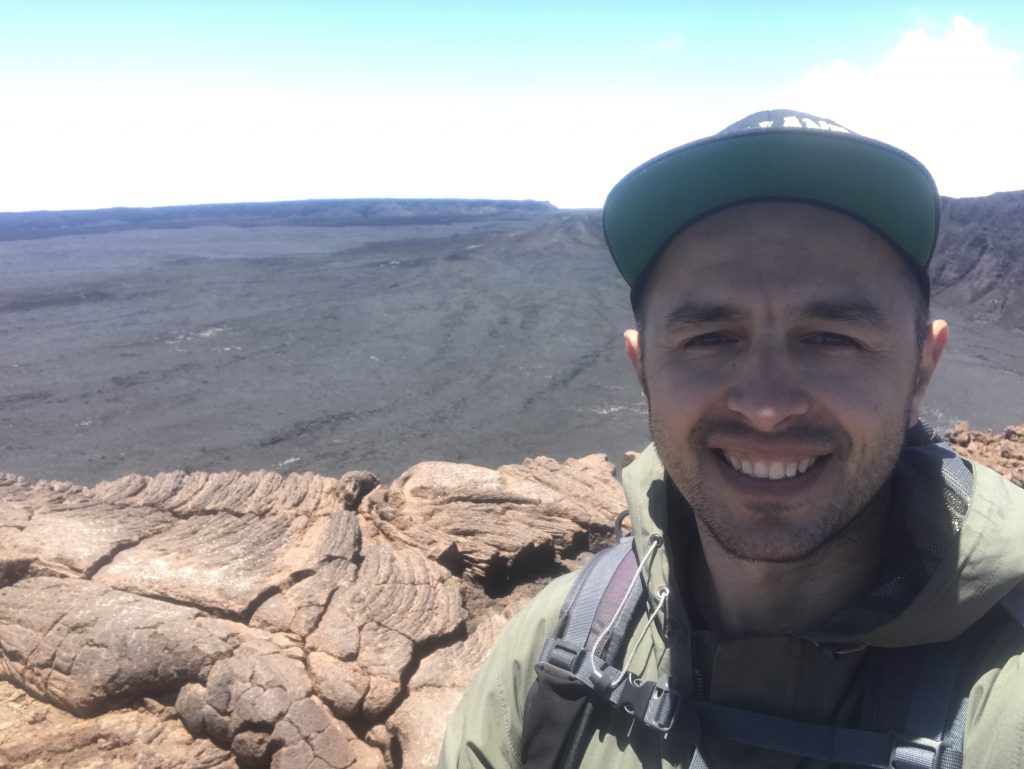
At that point I had hiked five hours in complete silence. I had not uttered a word or seen another soul. It was just me, my thoughts, and the sound of wind hissing.
My only regret was that I couldn’t stay up there longer. After about 10 minutes I started to head back down.
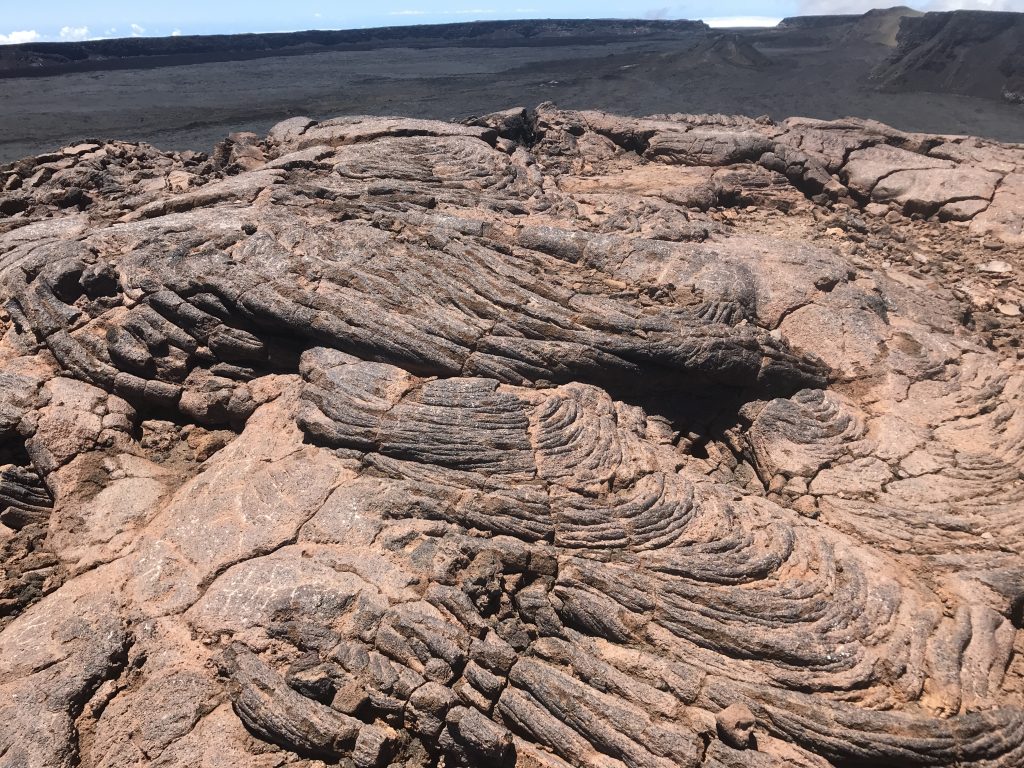
The Hike Down
With every step down the mountain I started to feel better. In only two hours I had covered about two-thirds of the total distance, which is when I saw people for the first time. A husband, wife and their adult son were about an hour into a hike. They told me that they were trying to get acclimated so that they could summit the next day. They could see that I wasn’t in the best of shape, and asked me if I needed anything. I gratefully took them up on their offer of salt pills and a small snickers bar.
I immediately felt a jolt of energy, which helped me get back to my car in under an hour.
Some Final Thoughts
This hike had must less to do with zero waste than it did with my relationship with nature. Hiking above the clouds was both empowering and yielding at the same time. As much as I would have liked to have felt like I was in control, Mother Nature was the one calling the shots. There was no water, no food and no shelter on that hike. There was no support from the National Park Service or other hikers. There was no music or podcasts. It was just me and the Universe.
In a way this hike reminded me of just how powerless and insignificant I am in the world. I am one person who is capable of great things, and yet, in that moment I felt so small. That hike more than anything reinforced to me two things:
- No matter how hard he tries, man cannot control nature.
- Change takes persistence, and happens very slowly.
I think that hike might have been my last solo adventure in such a remote place, but it will definitely not be my last big hike!
I’d like to hear from you
Have you had a transformational experience with nature? I would like to hear about it. Share your experience in the comments below, or by sending me an email!
About the author
Jonathan Levy is an environmental consultant focused in solid waste and zero waste lifestyle enthusiast. When he isn’t knee-deep in a dumpster, you can find him entrenched in a book, hiking the San Gabriel mountains, or tending to his composting worms.
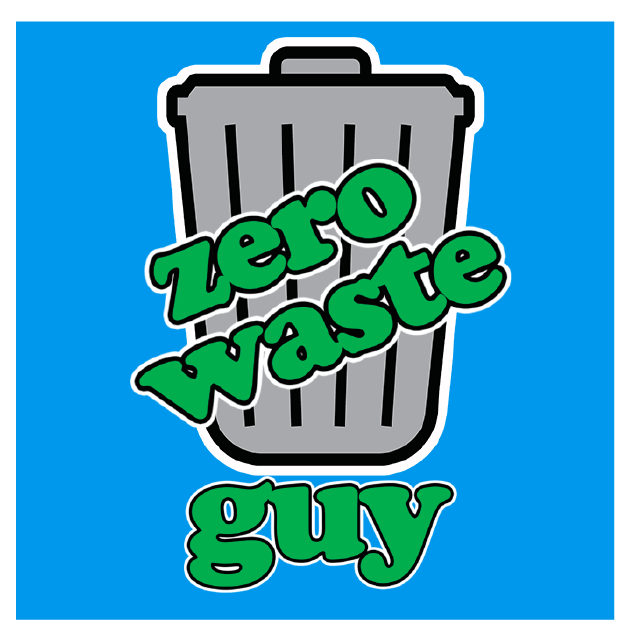
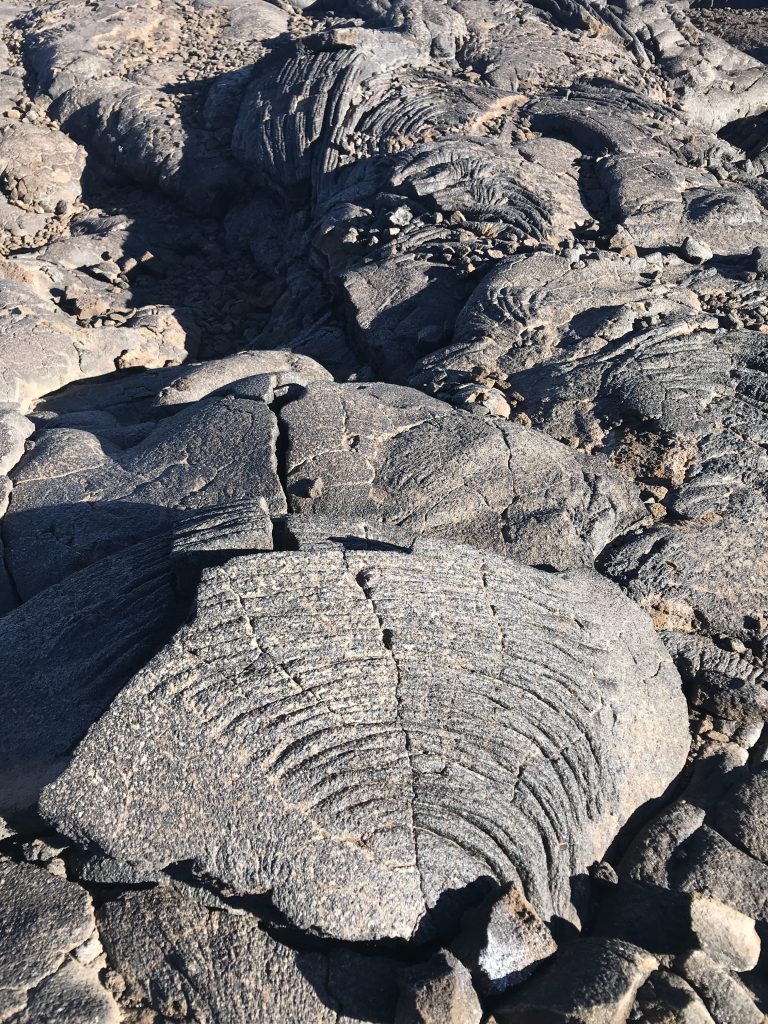
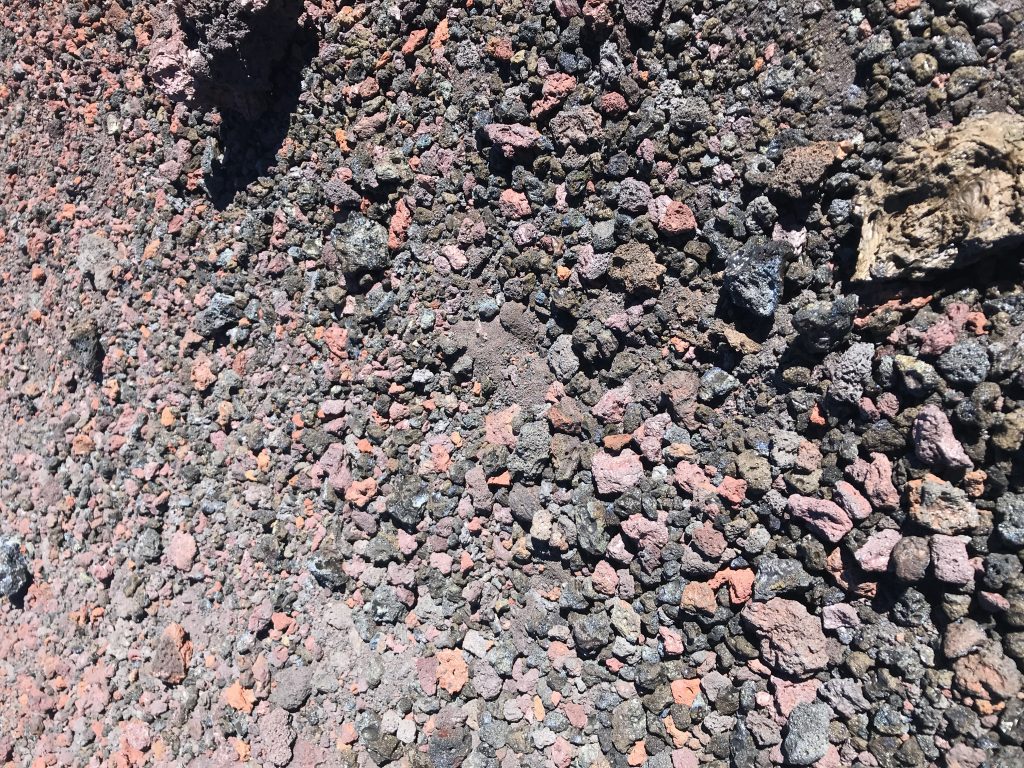
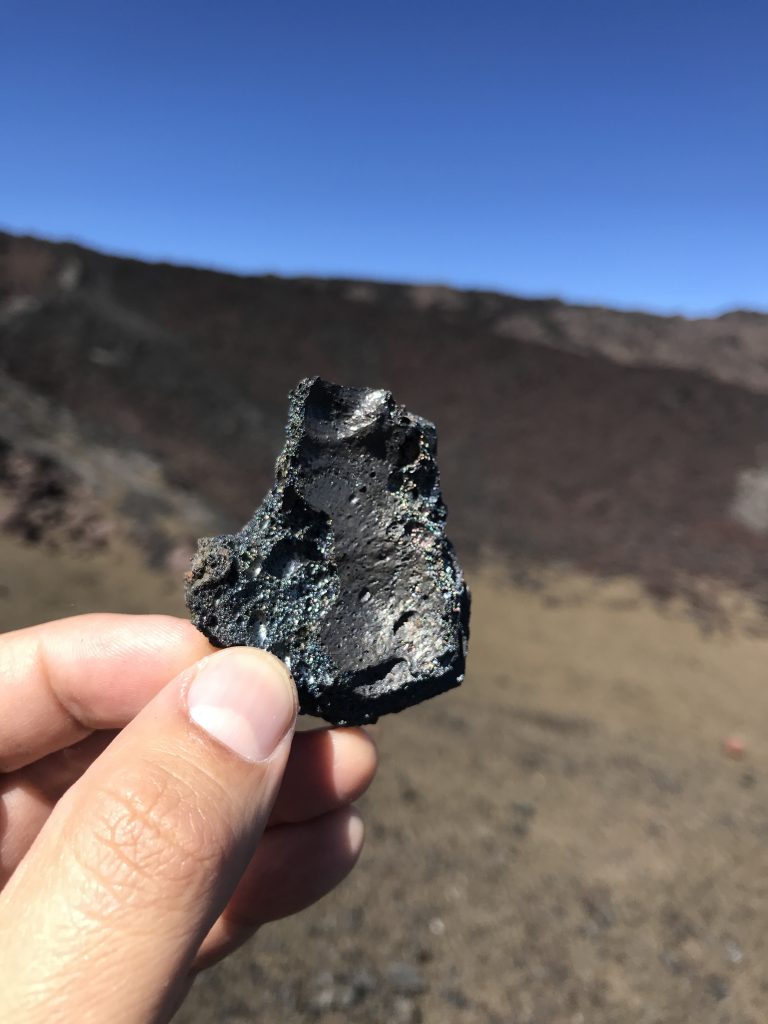
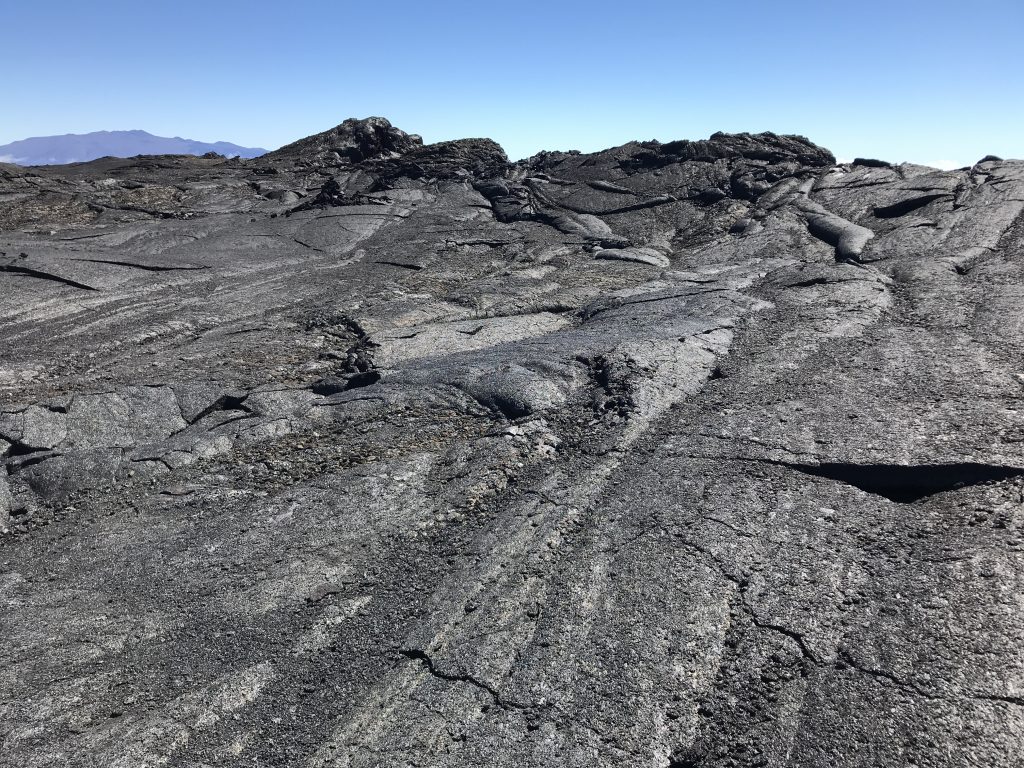
This sounds like quite the hike. I recently moved to Hawaii so I might just have to check this out! It’s amazing how diving into nature can completely rejuvenate you. I love eco-friendly, sustainable travel and sharing those experiences with the world– just like you! I can’t wait to read about your next adventure.
I’m glad you enjoyed it. I can’t believe it’s already been a year since I did that hike. I think it’s definitely worth making the trek, but I can’t stress enough how important it is to bring more water than you think you need and someone to replace electrolytes. It wasn’t particularly hot, but without any trees it took the energy out of me!
Hi, what time of year did you do this hike? Was that a good time to go?
Great question. I made the hike at the end of July 2019. It was a cold, exposed day up at elevation. I think July was a great time to do it, because I had a lot of sunlight. I believe it was about 80 and humid at sea level but in the 40s above 11,000 feet, which made for a cold day. I don’t know if it would have been different during the winter from a temperature standpoint, but the long day was helpful.
That’s helpful info to know. Will plan to do it over the summer for more daylight. Thank you for your account, helps me to plan!
I noticed it was hard to find trip reports on this particular hike. Wishing you all the best! Keep me posted once you finally do it!
A temperature in the 40s above 11000ft sounds like a perfectly normal summer day on Mauna Loa. Hawaii actually cools off quite nicely as you gain elevation – something many don’t notice since they never leave the beach. And high mountaintops (ie 10000+ft) are downright chilly, even during midday. Winter temps in the mountains follow those at sea level – cooler, but not a whole lot cooler. Certainly not subzero like, say, winters in the White Mountains. Think more 30’s rather than 40’s.
It was pretty wild to go from the top of Mauna Loa to the shores of the Big Island on the same day. It was such a contract…might as well have been a whole different world!
Just wondering. You keep talking about how being alone was a big problem. How so? For me, not seeing anyone else on the trail was one of the nicest things about Mauna Loa.
That was the first (and only) time I have hiked that long and at that high of an elevation alone. I think it might have been about comfort more than anything. Being away from people can be nice, but when alone for several hours and feeling bad due to elevation, it would have been nice to have seen some others along the trail.